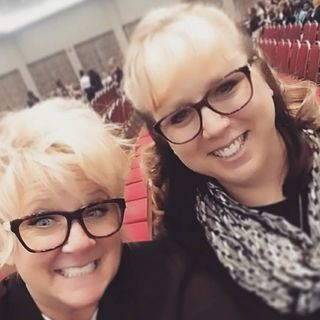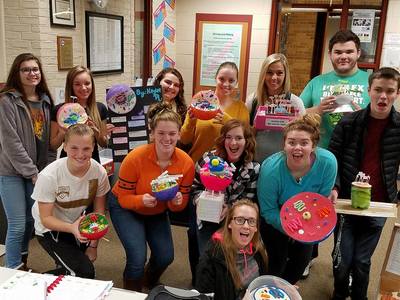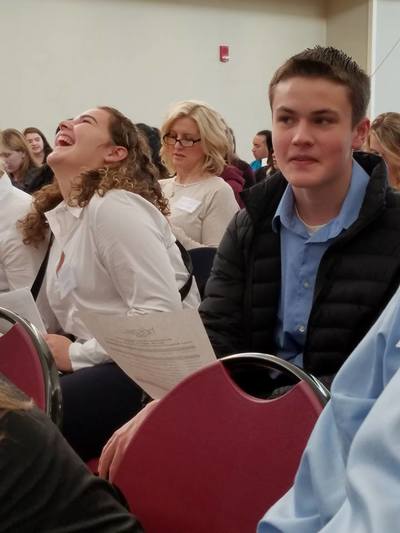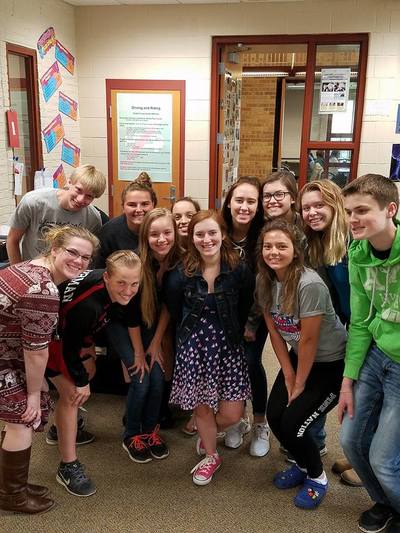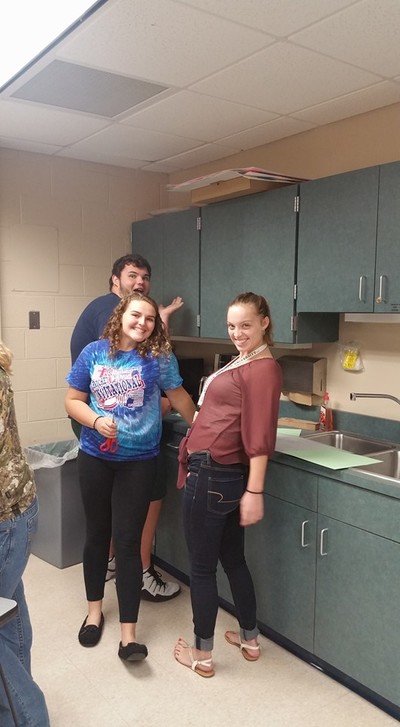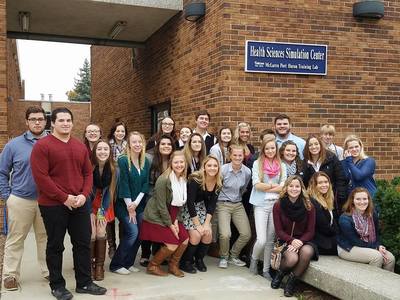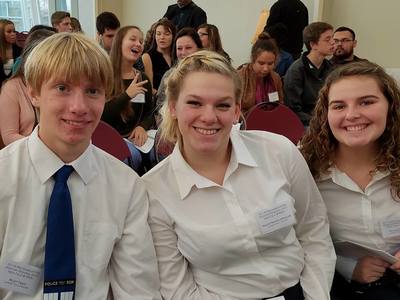All about Health Science Professions By: Kaylee Rucker |
First year students will focus on a wide variety of medical careers. They explore all five pathways of the Health Science cluster while paying close attention to Diagnostic and Therapeutic Services. Medical Terminology, Math Related to Drug Administration, and Anatomy with a focus on diseases are the core curriculum.
( Lapeer Educational and Technical Center Website). |
http://www.lcisd.k12.mi.us/schools/education_technology_center/programs/health_science_professions/
Curriculum:
Chapter 1: History and Trends of Health Care
* 1.1: History of Health Care
*1.2: Trends in Health Care
Chapter 2: Health Care Systems
*2.1: Private Health Care Facilities
*2.2: Government Agencies
*2.3: Voluntary and Nonprofit Agencies
Chapter 3: Careers in Health Care
*3.1: Intro. to Health Care Careers
*3.2: Therapeutic Career Clusters
*3.2a: Dental Careers
*3.2b: Emergency Medical Services Careers
*3.2c: Medical Careers
*3.2d: Mental Health Services and Social Services
*3.3e: Mortuary Careers
*3.2f: Nursing Careers
*3.2g: Nutrition and Dietary Services
*3.2h: Veterinary Careers
*3,2i: Vision Services
*3.2j: Other Therapeutic Services Careers
*3.3: Diagnostic services Careers
*3.4: Health Informatic Careers
*3.5: Support Services Careers
*3.6: Biotechnology Research and Development Careers
Chapter 4: Personal and Professional Qualities of a Health Care Worker
*4.1: Personal Appearance
*4.2: Personal Characteristics
*4.3: Effective Communications
*4.4: Teamwork
*4.5: Professional Leadership
*4.6: Stress
*4.7: Time Management
Chapter 5: Legal and Ethical Responsibilities
*5.1: Legal Responsibilities
*5.2: Ethics
*5.3: Patients Rights
*5.4: Advance Directives for Health Care
*5.5: Professional Standards
Chapter 7: Anatomy and Physiology
*7.1: basic structures of the human body
*7.2: body planes, directions, and cavities
*7.3: Integumentary system
*7.4: Skeletal system
*7.5: Muscular system
*7.6: Nervous system
*7.7: Special senses
*7.8: Circulatory system
*7.9: Lymphatic system
*7.10: Respiratory system
*7.11: Digestive system
*7.12: Urinary system
*7.13: Endocrine system
*7.14: Reproductive system
Chapter 8: Human Growth and Development
*8.1: Life Stages
*8.2: Death and Dying
*8.3: Human Needs
Chapter 9: Cultural Diversity
*9.1: Culture, Ethnicity, and Race
*9.2: Bias, Prejudice, and Stereotyping
*9.3: Understanding Cultural Diversity
*9.4: Respecting Cultural Diversity
Chapter 10: Geriatric Care
*10.1: Myths on Aging
*10.2: Physical Changes of Aging
*10.3: Psychological Changes of Aging
*10.4: Confusion and Disorientation in the Elderly
*10.5: Meeting the Needs of the Elderly
Chapter 11: Nutrition and Diets
*11.1: Fundamentals of Nutrition
*11.2: Essential Nutrients
*11.3: Utilization of Nutrients
*11.4: Maintenance of Good Nutrition
*11.5: Weight Management
*11.6: Therapeutic Diets
Chapter 14: Promotion of Safety
*14.1: Using Body Mechanics
*14.2: Preventing Accidents and Injury
*14.3: Observing Fire Safety
Chapter 15: Infection Control
*15.1: Understanding Principles of Infection Control
*15.2: Bio-terrorism
*15.3: Washing Hands
*15.4: Observing Standard Precautions
*15.5: Sterilizing with an Autoclave
*15.6: Using Chemicals for Disinfection
*15.7: Cleaning with an Ultrasonic Unit
*15.8: Using Sterile Techniques
*15.9: Maintaining Transmission-based Isolation Precautions
Chapter 16: Vital Signs
*16.1: Measuring and Recording Vital Signs
*16.2: Measuring and Recording Temperature
*16.3: Measuring and Recording Pulse
*16.4: Measuring and Recording Respiration
*16.5: Graphing TPR
*16.6: Measuring and Recording Apical Pulse
*16.7: Measuring and Recording Blood Pressure
Chapter 17: First Aid
*17.1: Providing First Aid
*17.2: Performing Cardiopulmonary Resuscitation
*17.3: Providing First Aid for Bleeding and Wounds
*17.4: Providing First Aid for Shock
*17.5: Providing First Aid for Poisoning
*17.6: Providing First Aid for Burns
*17.7: Providing First Aid for Heat Exposure
*17.8: Providing First Aid for Cool Exposure
*17.9: Providing First Aid for Bone and Joint Injuries
*17.10: Providing First Aid for Specific Injuries
*17.11: Providing First Aid for Sudden Illness
*17.12: Applying Dressings and Bandages
Chapter 1: History and Trends of Health Care
* 1.1: History of Health Care
*1.2: Trends in Health Care
Chapter 2: Health Care Systems
*2.1: Private Health Care Facilities
*2.2: Government Agencies
*2.3: Voluntary and Nonprofit Agencies
Chapter 3: Careers in Health Care
*3.1: Intro. to Health Care Careers
*3.2: Therapeutic Career Clusters
*3.2a: Dental Careers
*3.2b: Emergency Medical Services Careers
*3.2c: Medical Careers
*3.2d: Mental Health Services and Social Services
*3.3e: Mortuary Careers
*3.2f: Nursing Careers
*3.2g: Nutrition and Dietary Services
*3.2h: Veterinary Careers
*3,2i: Vision Services
*3.2j: Other Therapeutic Services Careers
*3.3: Diagnostic services Careers
*3.4: Health Informatic Careers
*3.5: Support Services Careers
*3.6: Biotechnology Research and Development Careers
Chapter 4: Personal and Professional Qualities of a Health Care Worker
*4.1: Personal Appearance
*4.2: Personal Characteristics
*4.3: Effective Communications
*4.4: Teamwork
*4.5: Professional Leadership
*4.6: Stress
*4.7: Time Management
Chapter 5: Legal and Ethical Responsibilities
*5.1: Legal Responsibilities
*5.2: Ethics
*5.3: Patients Rights
*5.4: Advance Directives for Health Care
*5.5: Professional Standards
Chapter 7: Anatomy and Physiology
*7.1: basic structures of the human body
*7.2: body planes, directions, and cavities
*7.3: Integumentary system
*7.4: Skeletal system
*7.5: Muscular system
*7.6: Nervous system
*7.7: Special senses
*7.8: Circulatory system
*7.9: Lymphatic system
*7.10: Respiratory system
*7.11: Digestive system
*7.12: Urinary system
*7.13: Endocrine system
*7.14: Reproductive system
Chapter 8: Human Growth and Development
*8.1: Life Stages
*8.2: Death and Dying
*8.3: Human Needs
Chapter 9: Cultural Diversity
*9.1: Culture, Ethnicity, and Race
*9.2: Bias, Prejudice, and Stereotyping
*9.3: Understanding Cultural Diversity
*9.4: Respecting Cultural Diversity
Chapter 10: Geriatric Care
*10.1: Myths on Aging
*10.2: Physical Changes of Aging
*10.3: Psychological Changes of Aging
*10.4: Confusion and Disorientation in the Elderly
*10.5: Meeting the Needs of the Elderly
Chapter 11: Nutrition and Diets
*11.1: Fundamentals of Nutrition
*11.2: Essential Nutrients
*11.3: Utilization of Nutrients
*11.4: Maintenance of Good Nutrition
*11.5: Weight Management
*11.6: Therapeutic Diets
Chapter 14: Promotion of Safety
*14.1: Using Body Mechanics
*14.2: Preventing Accidents and Injury
*14.3: Observing Fire Safety
Chapter 15: Infection Control
*15.1: Understanding Principles of Infection Control
*15.2: Bio-terrorism
*15.3: Washing Hands
*15.4: Observing Standard Precautions
*15.5: Sterilizing with an Autoclave
*15.6: Using Chemicals for Disinfection
*15.7: Cleaning with an Ultrasonic Unit
*15.8: Using Sterile Techniques
*15.9: Maintaining Transmission-based Isolation Precautions
Chapter 16: Vital Signs
*16.1: Measuring and Recording Vital Signs
*16.2: Measuring and Recording Temperature
*16.3: Measuring and Recording Pulse
*16.4: Measuring and Recording Respiration
*16.5: Graphing TPR
*16.6: Measuring and Recording Apical Pulse
*16.7: Measuring and Recording Blood Pressure
Chapter 17: First Aid
*17.1: Providing First Aid
*17.2: Performing Cardiopulmonary Resuscitation
*17.3: Providing First Aid for Bleeding and Wounds
*17.4: Providing First Aid for Shock
*17.5: Providing First Aid for Poisoning
*17.6: Providing First Aid for Burns
*17.7: Providing First Aid for Heat Exposure
*17.8: Providing First Aid for Cool Exposure
*17.9: Providing First Aid for Bone and Joint Injuries
*17.10: Providing First Aid for Specific Injuries
*17.11: Providing First Aid for Sudden Illness
*17.12: Applying Dressings and Bandages
" I'm not telling you it is going to be easy, I'm telling you it will be worth it." - Art Williams
|
Left: Mrs. Cowhy. Right: Mrs. Moore
|
Mrs. Cowhy is the Health Science Professions teacher. She has an Associates degree in Nursing, a Bachelors degree in Education, and a Masters degree in Special Education. In addition she is going to Concordia working on a Masters degree in Leadership.
Mrs. Moore was our paraprofessional this school year. She has an Associates degree in Human services, and a Bachelors degree in Community Development and Public Administration. She is currently working on her Masters degree.
|
